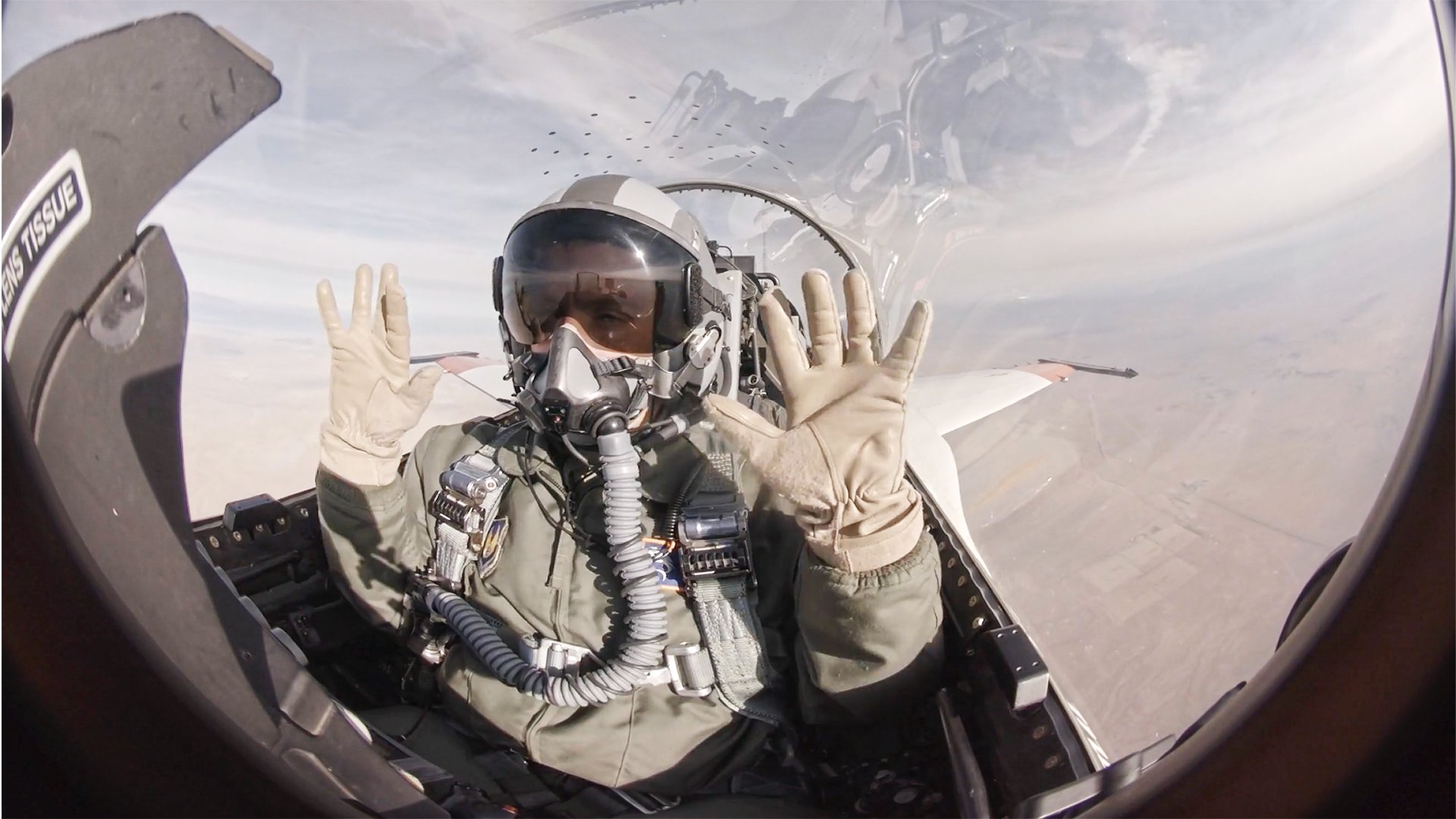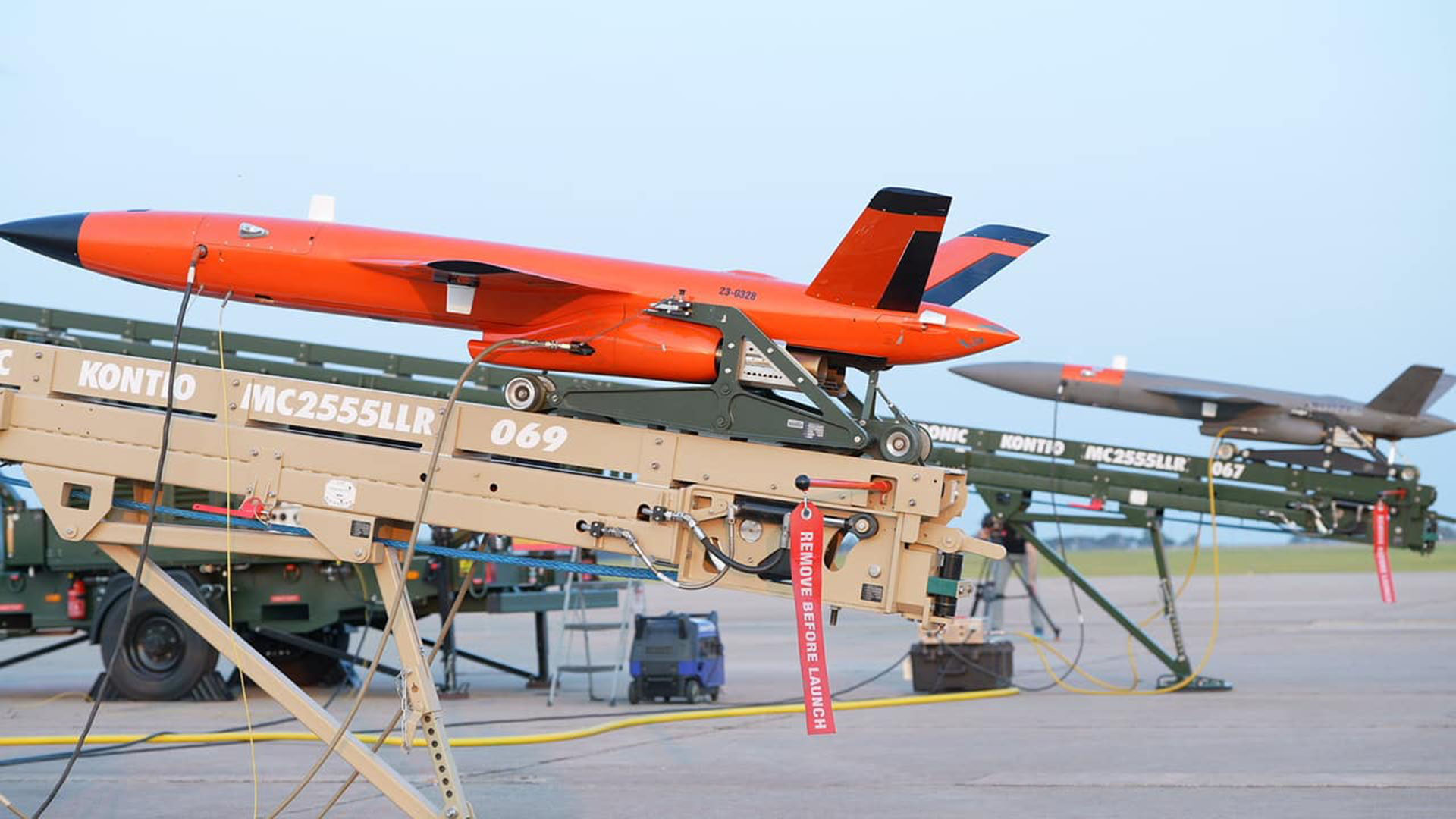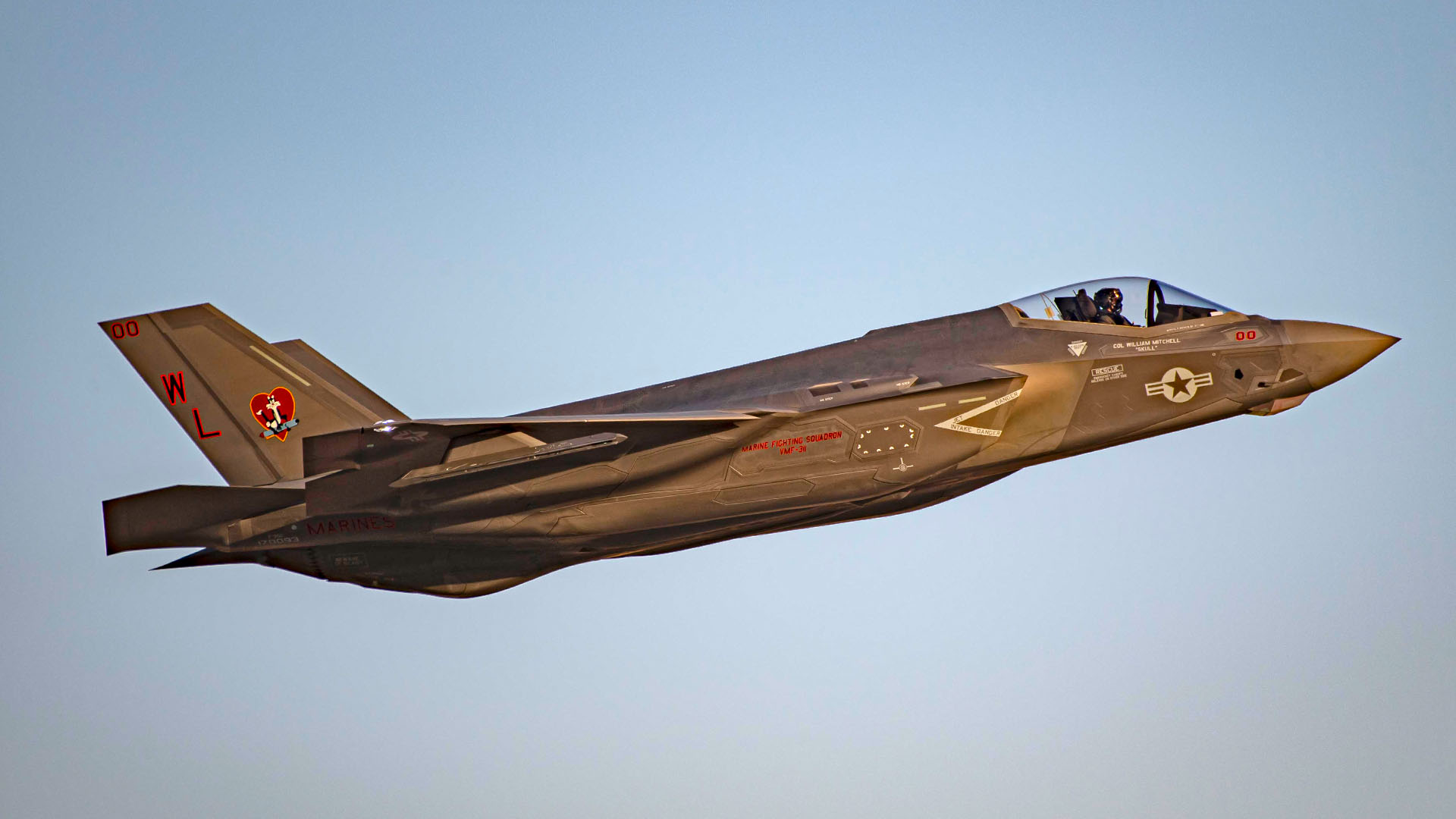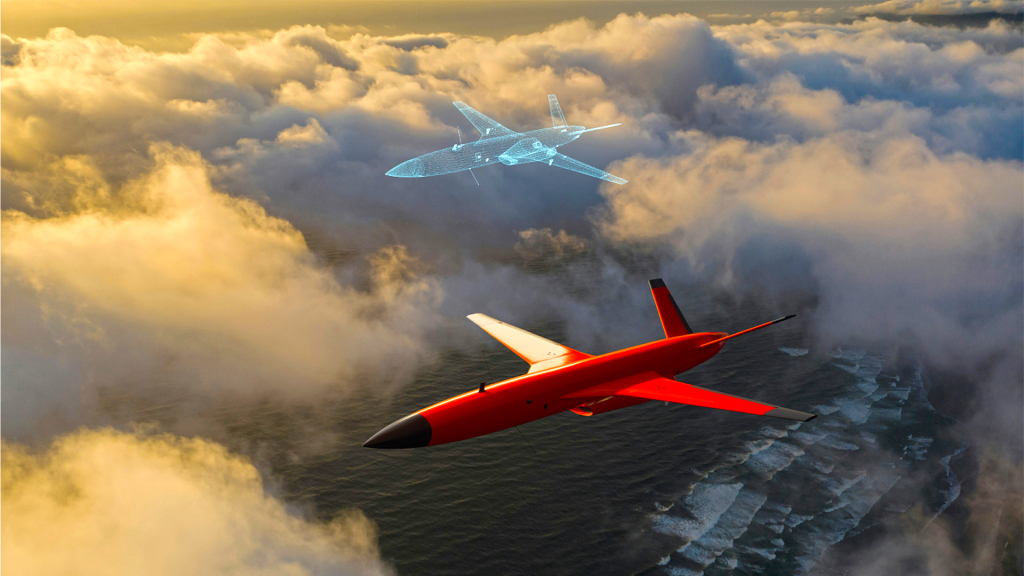Artificial Intelligence (AI) is touching our lives in varying forms every day and that is only set to accelerate. It is also becoming a massive growth sector in the defense industry. It is posited by friends and adversaries alike that whoever can possess AI supremacy will have a huge advantage on tomorrow’s battlefield. Defense contractor Shield AI has established a firm footing at the bleeding edge, using AI-infused cognitive autonomy to enhance military capability.
The company has developed its own family of small quadcopters that use its AI algorithms to efficiently sweep buildings for threats, and its larger drone known as V-BAT that can launch vertically, transition to forward flight, and operate as part of an automated swarming team. Shield AI says its autonomy is designed to be sufficiently versatile to be platform agnostic, meaning that it can be scaled and implemented across an infinite number of different platforms, and not just those in its own stable.

NATO defines autonomy as a system’s ability to function without outside intervention based on acquired knowledge and situational awareness. Within this, there are two main types when it comes to applying AI to military weapon systems: platform and mission autonomy. Platform autonomy focuses on self-management tasks like flight, navigation, and communication, as well as handling functions such as takeoff, landing, and fault detection. Mission autonomy, however, is more advanced, enabling systems to execute complex tasks, make tactical decisions, and seamlessly coordinate with other systems in dynamic environments.

The War Zone sat down with Shield AI’s vice president of engineering for Hivemind, Christian Gutierrez, who is in charge of autonomy engineering and Shield AI’s vision of steadily expanding through integration on an increasing variety of military platforms.
TWZ: Before we dive into Shield AI’s autonomy, and specifically your Hivemind product, can you outline your background and technical specializations that you bring to Shield AI?
Gutierrez: Well, I started my career as an avionics technician in the U.S. Air Force, working on F-117 Nighthawks and then F-16 Vipers that I deployed with to Iraq back in 2005. I also worked command and control, and battle management for NORAD [North American Aerospace Defense Command] in the Homeland defense alert mission.
I then joined Lockheed Martin’s Skunk Works as an embedded software engineer working on a critical development program for future-generation aircraft and ground systems. That work included a lot of development testing in that realm before I transitioned to human space flight and deep space missions with my work being focused on software and navigation, learning about the hostility of deep space.
Then I became the chief of systems engineering for a family of hypersonic missiles. In that role, I led electrical mechanical ordnance propulsion and the whole lifecycle of the systems. That program ran from inception, through capture, design development, and multiple flight tests for many customers including the U.S. Army and the Navy.
All of that experience led me to my current role with Shield AI and our vision of deploying our AI [artificial intelligence] solution across a host of platforms and domains. Right now we’re focused on the air segment, but we’re already growing and scaling to expand into different domains such as maritime. We see our success in this industry surrounding our ability to develop the capability to suit the varying needs of different warfighters.

TWZ: Can you give us your take on the expansion of autonomy in the military space and explain Shield AI’s approach to mission autonomy, and the opportunities this creates.
Gutierrez: When I was at Lockheed Martin – as a platform provider – we started touching on the early phases of what we call platform autonomy, so for example, an autopilot with enhanced features.
Since that time a clear bifurcation between platform autonomy and mission autonomy has developed. Think of the latter as a valuable blend of a mission planner and a pilot.
Shield AI’s Hivemind autonomy can help companies that excel in developing and building platforms to push the envelope through the employment of mission autonomy. There has to be maturity in both the platform and the autonomy so that we can collectively execute this successfully.
In terms of challenges, we need alignment and standards to be fully established around autonomy, much like the automotive industry has done. That will allow us to make aligned progress ahead of our adversaries. At a high level, we think there is industry consensus on the split between mission and platform autonomy. We are working with industry partners to promote understanding of where this lies in terms of defining those levels of autonomy.
At Shield AI we are sending a strong message around establishing and maintaining stringent industry standards. We know what they are for automotive, and leaders of AI and autonomy, and the world’s leading defense contractors, are now working together to define the standards for our industry.
Shield AI is focused on building trust with our customers and developing relationships. That is formed around clearly understanding concepts of operations, understanding the operational needs of different theaters, and understanding the limitations of technology that currently exists. Then we can start to help advance those technologies with our technology.
Success in the defense industry is relatively straightforward – it’s the ability to develop and deliver for the warfighter. So first you have to understand what it is the warfighter needs. For that, Shield AI has recruited industry experts to help us shape our operational analysis and our understanding of exactly what is needed. It’s then about having the required expertise to take it through development, integration, and testing.
We also need to be very direct with how we regulate all of this and ensure we have the right certification and standards in place.
TWZ: Could you share examples of mission autonomy in action? Any real-world wins that demonstrate the effectiveness of your autonomy software and how these successes have shaped your strategy?
Gutierrez: Mission autonomy is real – this isn’t theory or PowerPoint. Our technical approach is informed by our experiences with Hivemind, which started out in our small Nova quadcopter drones from 2018. This was years before most people had even heard of mission autonomy. Since then we’ve been scaling up to Group 3 unmanned air vehicles such as V-BAT and we’re doing it seamlessly thanks to how we have developed our Hivemind software stack, which was developed from the outset to be extensible and modular. Our software stack is about perception, cognition, and action. We perceive something, we identify it, then we take action.
Hivemind runs through our V-BAT unmanned system, and it has been proven in projects such as the X-62A VISTA [Variable-stability In-flight Simulator Test Aircraft] where we were in complete control of maneuvering an F-16 fighter and showcasing that we could go head-to-head with crewed fighters in dogfights.

We’ve got several flight tests that we are currently running, including showcasing operations in denied environments. That’s exercising our state estimation algorithms – which is about aggregating data from various sensors to establish where the platform is at in terms of state, so the platform can continue its mission.
We also recently completed live fly testing with two Kratos MQM-178 Firejets and two crewed chase aircraft. That testing was about proving the ability to operate what we call intelligent mass, that means crewed and uncrewed platforms coming together and breaking apart at will. That was a huge accomplishment in a first-of-its-kind test. The team is extraordinarily excited about that because we are developing and maturing our technology and it’s a huge win at the Group 5 unmanned level.
You can read more about this here.
TWZ: Can you explain how Hivemind can support enhancements in different platforms?
Gutierrez: It goes back to that bifurcation of platform autonomy and mission autonomy. In the military aviation world, the platforms have to fly. But they also have to accomplish a mission, and that’s where we come in – where our Hivemind autonomy stack can accomplish a mission.
For example, military combat platforms typically have a set of sensors and a feed from those sensors. So, they might need to locate a target. We take those inputs and use AI to make decisions. The decisions being made can be as complex as working out a location or finding an object or target.
When we talk about our AI in air platforms, the natural immediate thought is that it’s a pilot. That’s right in part, because yes, the AI is flying the aircraft, but that is only a very small part of what you’re doing. It’s actually the mission side of it that’s more of a critical area. You’re relying on the platform autonomy to fly the aircraft, and the mission autonomy is telling it to bank and maneuver and climb, etc, to achieve the mission objectives.
On the VISTA program we were closer to the control part, the stick controls and things like that to actually fly the actual airplane. But that’s not really the environment we are focused on, it’s much more about the mission autonomy.
We aren’t building a bespoke solution that only meets the needs of one platform, and we definitely don’t want it to be locked down in that way. We need to offer modularity, the ability to scale across different platforms in any class or group, adaptability, and interoperability.
We need to be able to scale across maritime, space, missile defense, you name it, applying government standards of open architecture so we can operate within anybody’s environment via a set of tooling. That means you can generate an AI pilot for example, and we can license that tool suite so a customer can either maintain what we generated for them or develop their own AI for whatever segment or platform they have in mind.
A platform manufacturer can come to us as world renowned experts in AI and software development and we can work with them to help develop their own solution for their fleet of aircraft. So, we get away from that vendor lock situation by being open and able to integrate on any system or within any business model. We essentially license our software to them and then work as a partner. This way they get full access to the system, and they are able to do some development themselves.
The U.S. government really wants to show that suppliers are integrating with a host of industry partners and that you can deliver a product that’s not solely controlled and owned by the prime contractor. A way of doing that is to expose the interfaces to ensure that everyone has access. That’s exactly what we do with our solution. Our bread and butter is the underlying algorithms that generate that AI effect, and it can then be customized as required to meet needs and missions.

TWZ: What are the key factors that differentiate Shield AI from competitors, especially in terms of your technology?
Gutierrez: You have reference architecture, which is the pilot. The core reference implementation is the Intellectual Property [IP], which is all the underlying algorithms, then you have the enterprise, that’s the tooling. Our middleware strategy with industry compliance and modular design enables rapid customization.
Having middleware allows you to integrate in a host of hardware environments. It doesn’t mean you account for all of them, and that’s why we’re also investing in our own computer hardware so that we can offer to work in their hardware environment, or we can bring our own computer box. That middleware is critical, and we’ve invested in it over the years.
We can adapt to any platform with any sensor and with any mission with ease, and we can do it ourselves, or we can enable that provider to do it themselves. That’s a huge differentiator. We can show a customer how to do one example and then they can take over and continue to execute while we provide support. That approach seems to really resonate with the customer.
The goal is to be able to integrate Hivemind into any hardware environment that a platform provider has. If the environment isn’t suitable, for example it doesn’t have enough compute, or it doesn’t have the power, then we can provide our own ‘compute box.’
We can speak whatever protocol the platform might have, be it MIL-STD-1553 or whatever, there’s all kinds of protocols on board these platforms. So having a compute box that can speak to many interfaces is hugely important and just the kind of detail that we think through to ensure that it is a low bar to entry with platform providers.
We talk a lot about reinforcement learning and the AI technologies and techniques that we use to conduct a mission. How we learn from the mission, adapt it and then redeploy it onto a platform within hours. Then there’s the stack of the cognition, perception, and action, which is tied to our task and behavior model which mimics human behavior.
With the VISTA tests, and what we have just seen with Firejet, we are leaps ahead of everyone else. With Firejet, the customer said that was the best flight performance they’d seen. The maneuverability, everything, just went phenomenally well. We know that it is the best, but we also know the hard work that went into it and our competitors have a lot to do to keep up with us, but competition keeps us on the edge of our seats.
TWZ: Modern flight tests are very rigorous. Do you see autonomy working in the same boundaries or do you foresee a need to rewrite the rulebook to be more agile?
Gutierrez: I think the rulebook is being rewritten as we speak. We are at the bleeding edge and forcing regulators to catch up. Shield AI holds unique expertise in this industry, and our experts are able to explain the intent and then work with customers to shape test plans and meet criteria.
We are hiring industry experts especially in mission planning airworthiness certification, which is a huge piece for us – managing FAA regulations, safety boards, and those kinds of areas. Also, professionals with a test and integration background, plus experts in modeling and simulation as well as operational analysis.

The operational analysis, integration, and test modeling and simulation create that trifecta needed to successfully navigate operational test and evaluation and to build trust with your customer. You must have that pedigree of testing, especially for that kind of automated testing. It’s imperative that we show our customers that we understand how to develop and integrate with complex weapons systems.
We are also talking about the definitions of the levels of autonomy, which hasn’t been formally written down, so it’s difficult for certification boards to say whether you meet the intent and criteria. We are defining this and applying the tried and trusted methods that we’re adopting. I mean, we don’t see a need to reinvent the wheel, just automate it.
Adapting to what we see in the field is critical, making fixes, then getting it through testing fast. We must shorten that timeline. Historically, it’s taken months before a patch is deployed, and we want to get these upgrades out into the field within hours. We need to be audacious.
TWZ: How do you envision Shield AI’s technologies and products complementing those of prime contractors or aircraft builders?
Gutierrez: Traditionally, having a gap in capability leads to investing a ton of money to develop a very exquisite system. Once that system is finally operational, it may no longer be relevant. We’ve wrapped up the war in the Middle East and now we have a problem in the South China Sea, so a platform designed for one may no longer be effective for the other.
That’s where Shield AI comes in and makes a weapon system more effective. For example, we can increase range. That’s not fuel range, but operating range, mission effectiveness range, advancing capabilities and technologies.
We are not pitching our capabilities as a threat to industry, but as a vital partner to success. The bigger the partner and platform portfolio, the more powerful Shield AI’s value proposition becomes through the embedding of our Hivemind software.
For example, the need to address stand-off in the South China Sea when a platform cannot penetrate. We can look at the set of problems around that penetration and develop a set of technologies to help overcome deficiencies in maybe something that has changed since the original requirements were set.
Traditionally, this might necessitate a new aircraft or a different block upgrade, which equates to billions of dollars of investment. Shield AI can assess the issue and potentially help with a solution. It’s not easy to just drop in new hardware, but our compute hardware is super lightweight and small and it is absolutely able to make these more intelligent systems.
TWZ: Can you explain how Shield AI autonomy can enhance platforms right now.
Gutierrez: We talk about coming in as a software upgrade not hardware. They are currently limited to platform autonomy because they don’t have the technology to do the mission autonomy. Particularly with regard to unmanned systems, it’s critically important to be able to push the envelope there.
If you think of crewed aircraft such as the F-35, for example, a Shield AI solution could be configurable as a co-pilot. There’s a lot of things we can do to help protect the asset. You could enable cognitive behavior within your electronic warfare sensor suite. There might be signals that are not recognized, that haven’t been registered before and you need to come back and send the signal out to somebody to process and then have a new jamming effect drawn up and then implemented. We could automatically update the mission data in flight, there and then, and the system would learn from it. That could continue exponentially.

TWZ: Looking forward, how do you see Shield AI’s approach to mission autonomy evolving?
Gutierrez: We’re trailblazing here and frankly ahead of what people can wrap their head around. We have to demonstrate our credentials, and we have to do all this ethically and partner with the right agencies.
When we talk about working at the edge, we are talking about no communications – it’s the platform and its mission autonomy. So, how do you ensure it’s still doing the right things that you wanted it to do? We’re currently working through that with a really slick solution that ensures there’s essentially a third voter. Sort of like an arbitrator. It’s something that we’re actively working on right now.
It’s going to build great trust with our customers. It’s not even the way it will monitor and ensure the location we want our platform to be at, it’s about keeping what we’re doing safe and it’s within the boundaries of the mission profile.
TWZ: In terms of mission technology that’s developing fast, I’d assume Ukraine is a big focus right now?
Gutierrez: We’re keeping a close eye on what’s going on there. We’re seeing firsthand some of the technologies that are being employed by the Russians. The agility and speed to adapt and iterate has been shown to be critical, particularly in denied environments.
It’s easy to see how you might initially enter an environment like that and operate effectively. But maybe just a few days later the adversary has adapted to throw your sensors off. You need to adapt, evolve, and that’s where we can help. But you can’t teach a system that’s not there. If you don’t have the hardware in the first place you cannot have an effect. That’s why we are not a threat to the platform, we’re a partner capability enhancer.
TWZ: In the next five years, what do you think will surprise people about developments in autonomy for aircraft, and perhaps other types of platforms.
Gutierrez: We are assimilating a body of industry experts, and we’ve got fantastic leads and opportunities that will help us to address gaps in maritime operations, for example, be that surface or subsurface or within the space domain, within missile defense.
There are legacy systems out there that need life extension, that next-generation capability and we are actively expanding into those market spaces.
The definition of what cognitive autonomy is will be fully defined, and we will be at the bleeding edge of it. We have also been very thoughtful about awarding certification and about safety.
We’ve also been very thoughtful about how we integrate into existing or developing platforms with our own compute hardware or our middleware. So, you’re going to see Shield AI proliferate across many domains. Cognitive autonomy will become more understood and widely embraced, so in five years if we’re only talking about aircraft flying with our autonomy I would be surprised!
Contact the author: jamie.hunter@teamrecurrent.io
